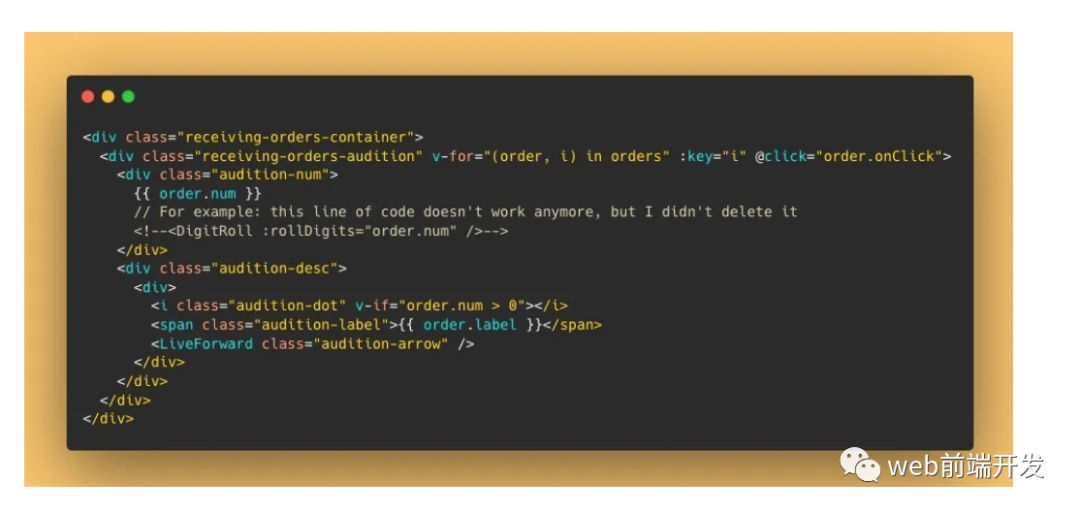前言 过去,我写了很多垃圾代码,现在,看起来很糟糕。
当我再次看到那些代码片段时,我甚至怀疑自己是否适合做一名程序员,但是,不管怎么样,已经走在编程开发的路上了,所以不会不懂只能多学习了。
现在,我就把自己踩过的坑总结一下分享给你,希望对你有所帮助。
1. Promise回调地狱 Promises 提供了一种优雅的方式来处理 JavaScript 中的异步操作。这也是避免“回调地狱”的解决方案之一。但是我并没有真正理解它的意思,所以我写了这段代码。
我做了这些事情:
QQ6Aca">先获取用户的基本信息。 按用户信息获取所有文章的简要摘要。 通过文章简单获取文章详情。 复制 // ❌
getUserInfo ()
.then ((userInfo ) => {
getArticles (userInfo )
.then ((articles ) => {
Promise .all (articles .map ((article ) => getArticleDetail (article )))
.then ((articleDetails ) => {
console .log (articleDetails )
})
})
})我在这里根本没有利用 Promise,我们应该像下面的代码片段一样处理它:
复制 // ✅
getUserInfo ()
.then ((getArticles )
.then ((articles ) => {
return Promise .all (articles .map ((article ) => getArticleDetail (article )))
})
.then ((articleDetails ) => {
console .log (articleDetails )
})2.不处理错误信息 我经常只写请求成功的代码逻辑,而忽略请求失败的代码逻辑。
复制 // ❌
const getUserInfo = async () => {
try {
const userInfo = await fetch ('/api/getUserInfo' )
} catch (err ) {
}
}这是没有经验的,我们应该给出一个用户友好的提示,而不是什么都不做。
复制 // ✅
const getUserInfo = async () => {
try {
const userInfo = await fetch ('/api/getUserInfo' )
} catch (err ) {
Toast (err .message )
}
}3. 为函数设置太多参数 当一个函数的参数过多时,它的可读性就会变差,甚至不知道如何正确传递参数。
例子
我们想获取用户的一些基本信息,比如姓名、性别、年龄等。
复制 // ❌
const getUserInfo = (name , age , weight , gender , mobile , nationality , hobby , address ) => {
// ...
}
getUserInfo ('fatfish' , 100 , 2000 , ... )以上这样的代码,那真是太糟了,如果你的同事这样写代码,你会揍他吗?
事实上,当函数参数过多时,应该使用对象来传递需要的信息,这样会提高其可读性和扩展性。
复制 // ✅
const getUserInfo = (options ) => {
const { name , gender , age , mobile , weight , nationality , hobby , address } = options
// ...
}
getUserInfo ({
name : 'fatfish' ,
age : 100 ,
weight : 2000
// ...
})4.神奇的数字 小伙伴们,你们写过这样的代码吗?很多地方用数字来做逻辑判断似乎很正常。是的,这让我很困惑 1、2、3 到底是什么意思。
复制 ❌
// component1.js
if (status === 1 || status === 2 ) {
// ...
} else if (status === 3 ) {
// ...
}
// component2.js
if (status === 1 || status === 2 ) {
// ...
}我们最好将这些数字定义为常量。
复制 // ✅
// constants.js
export const STATUS = {
// It is an adult and has real-name authentication
adultRealName : 1 ,
// It is a minor and has real-name authentication
minorRealName : 2 ,
// Not real-name authentication
notRealName : 3 ,
// ...
}
// component1.js
import { STATUS } from './constants.js'
if ([ STATUS .adultRealName , STATUS .minorRealName ].includes (status )) {
// ...
} else if (status === STATUS .notRealName ) {
// ...
}
// component2.js
import { STATUS } from './constants.js'
// component2.js
if ([ STATUS .adultRealName , STATUS .minorRealName ].includes (status )) {
// ...
}1. 2. 3. 4. 5. 6. 7. 8. 9. 10. 11. 12. 13. 14. 15. 16. 17. 18. 19. 20. 21. 22. 23. 24. 5.使用.length判断字符串长度 大多数时候,我们使用 .length 来判断字符串的长度是安全的,但是在表单输入的情况下要小心。
当我们输入🍫时,nameLen的值为2——这不奇怪吗?
复制 // ❌
< input type = "text" id = "name" >
< script >
const $name = document .getElementById ('name' )
$name .addEventListener ('blur' , () => {
const name = $name .value
const nameLen = name .length
// input: fatfish => nameLen: 7
// input: 🍫 => nameLen: 2
console .log (`name: ${ name } , nameLen: ${ nameLen } ` )
}, false )
< /script> 1. 2. 3. 4. 5. 6. 7. 8. 9. 10. 11. 12. 是的,这是有原因的,你猜怎么着?
复制 // ✅
< input type = "text" id = "name" >
< script >
const $name = document .getElementById ('name' )
$name .addEventListener ('blur' , () => {
const name = $name .value
const nameLen = name .length
const spRegexp = /[\uD800-\uDBFF][\uDC00-\uDFFF]/g
const nameRealLen = name .replace (spRegexp , '_' ).length
// input: fatfish => nameLen: 7, nameRealLen: 7
// input: 🍫 => nameLen: 2, nameRealLen: 1
console .log (`name: ${ name } , nameLen: ${ nameLen } , nameRealLen: ${ nameRealLen } ` )
}, false )
< /script> 1. 2. 3. 4. 5. 6. 7. 8. 9. 10. 11. 12. 13. 14. 6. 永远不要写代码注释 我们经常向别人抱怨,“你为什么不写代码注释?” 但实际上,我们自己也从来不写它!
复制 // ❌
const fn = (dpr ) => {
if (dpr >= 2 ) {
// ...
} else {
}
}我的天,你知道‘dpr’是什么意思吗?没想到是指window devicePixelRatio。
复制 // ✅
// dpr: Please enter a value for window.devicePixelRatio
const fn = (dpr ) => {
if (dpr >= 2 ) {
// ...
} else {
}
}7.无意义的代码注释 与其不写代码注释,也不要写无意义的代码注释,因为它浪费了你的时间。
你不妨解释一下“a”的含义或使用有意义的变量名称!
复制 // ❌
let a = 1 // Set the value of "a" to 1 8. 随机命名 过去,我常常编写随机命名变量的笨拙代码片段。
因此,亲爱的朋友们,请你们不要学我,你应该给变量一个适当且有意义的名称。
9. 删除不要弃用的代码 很多时候,我们的网站 会不断调整功能,有新功能也有过时的功能,但我总是担心以后会用到,所以我们总是注释掉,并没有删除。
其实这种担心是完全没有必要的,因为以后用到的可能性很小。即使以后要用到,也可以通过‘git’来追溯。
10. 上千行组件代码 我已经在一个组件中编写了一千多行代码。这太糟糕了,我们应该将组件的功能进一步拆分成更小的组件。
最后 感谢你的阅读,以上就是我今天想要跟你分享的内容,如果你觉得我的内容对你有用的话,请点赞我,关注我,同时,也期待你的关注,这样,你将会阅读到更多编程技术相关的文章。

